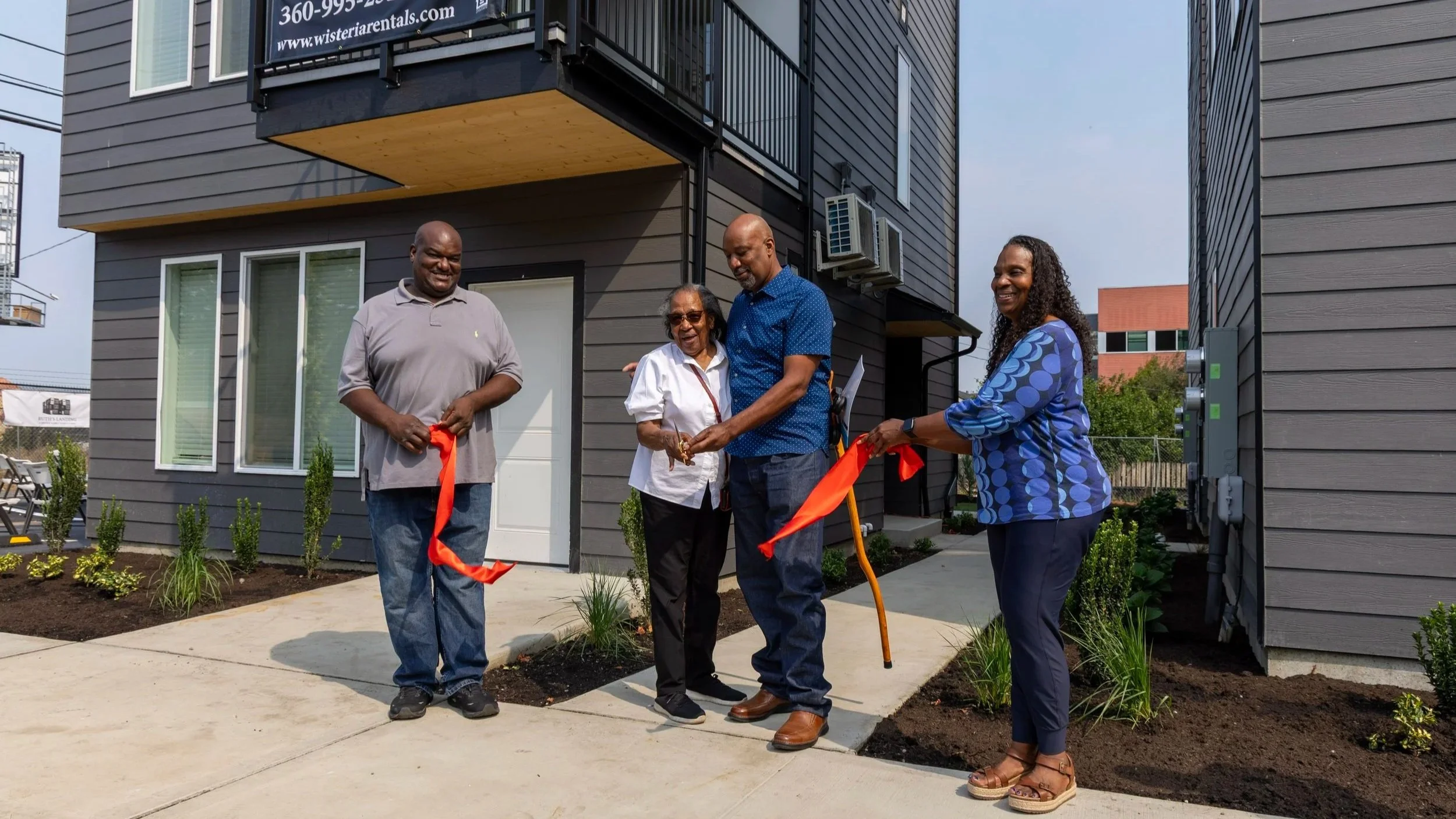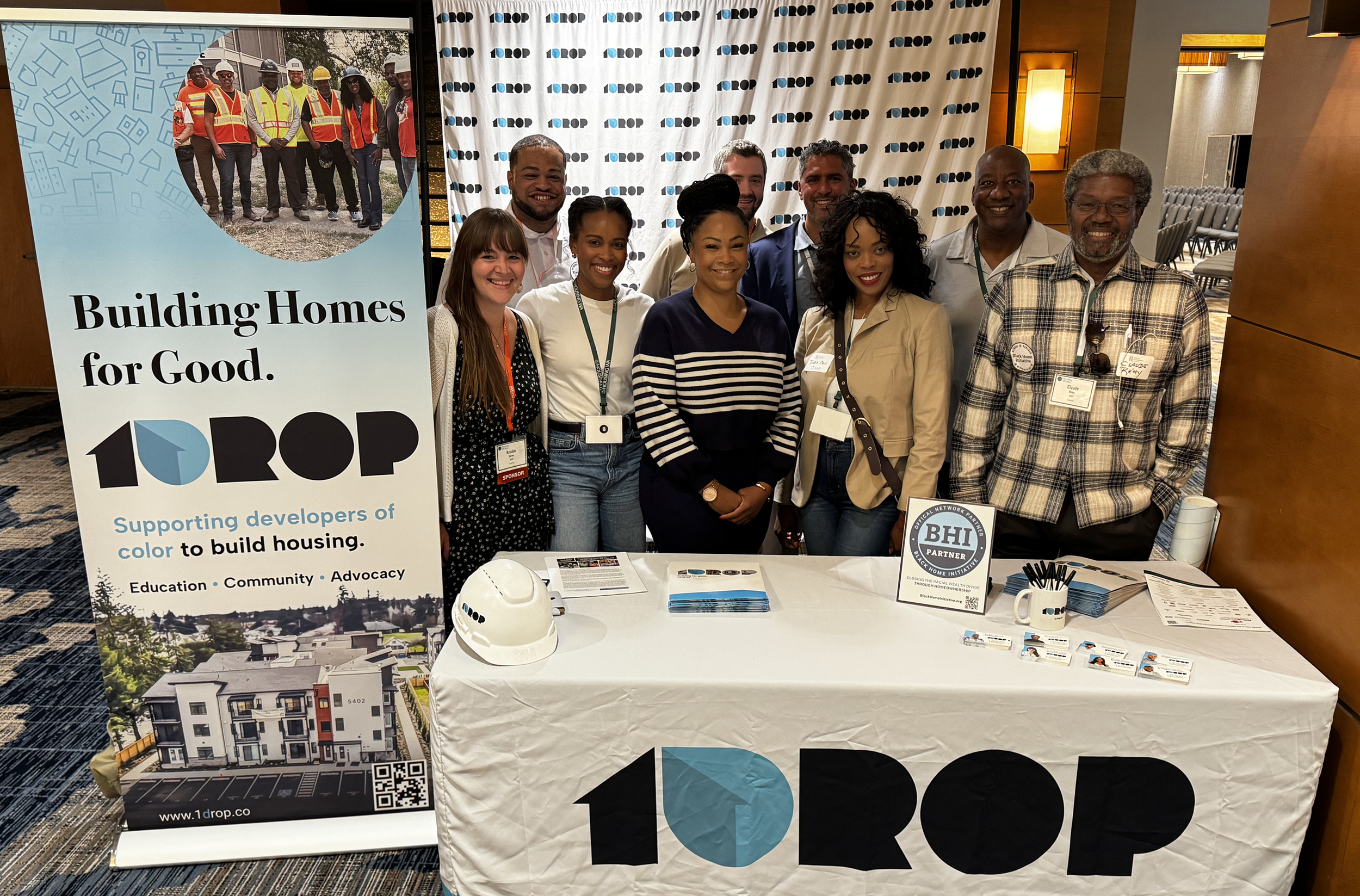Plain Talk Housing Pt. 1: Breaking Down Affordable Housing by the Numbers
“Affordable housing” is a term that gets used a lot, but it doesn’t always mean the same thing depending on who’s using it. When policymakers or funders say “Affordable” (with a capital A), they’re usually talking about housing tied to income limits set by the U.S. Department of Housing and Urban Development (HUD).
But when people in the community talk about whether housing is “affordable,” they usually mean something much simpler: can people who work here actually afford to live here?
Affordable with a Capital A
In housing programs, Affordable is tied to something called “Area Median Income” (AMI). The idea is simple: it’s the middle point of all household incomes in a region — half the households make more, half make less. Each year, HUD updates the income levels, and those numbers become the baseline for deciding what officially counts as Affordable with a capital A.
These limits also change depending on household size. A family of four earning $100,000 won’t have the same affordability threshold as a single person earning the same amount. The system adjusts for how many people are sharing that paycheck.
Why does it matter? Because tying rents and home prices to AMI makes the system consistent. It gives local governments, funders, and developers a common yardstick for who housing is meant to serve. Without it, “affordable” would mean something different to every city, agency, or builder, and programs couldn’t function.
How Affordability Gets Calculated
When housing is tied to AMI, the rule of thumb is that a household shouldn’t spend more than 30% of its income on rent or a mortgage. That 30% threshold has become the standard way we define affordability. Cross that line, and a household is considered “housing cost burdened” — too much of their paycheck goes to housing, leaving less for essentials like food, childcare, or transportation.
This framework exists for a reason. Without it, there wouldn’t be a consistent way to define or fund Affordable housing. Programs, incentives, and subsidies all use AMI to set the rules of the game.
In practice, Affordable Housing is usually reserved for households earning 80% of AMI or less. That’s why most subsidies and incentives — like tax credits and housing grants — are concentrated here, and why nonprofit developers have traditionally taken the lead in creating Affordable housing units.
Plain Speak: What AMI Means in Pierce County
For example, in Pierce County, HUD’s 2025 Area Median Income (AMI) for a family of three is about $104,000 a year. Using the 30% housing cost rule, here’s how it breaks down:
100% AMI = $104,000/year → $2,600/month max housing cost
80% AMI = $83,200/year → $2,080/month max housing cost
60% AMI = $62,400/year → $1,560/month max housing cost
These figures determine the eligibility for Affordable housing programs in Pierce County, and set the benchmarks that guide developers, lenders, and funders.
They also translate directly into units— what type, size, and price point can realistically be delivered and absorbed. If 80% AMI households can only afford around $2,000 a month, that may mean smaller footprints, modest finishes, or shared amenities become part of the equation.
In other words, AMI shapes not only who you’re building for, but what’s financially possible to bring to market. It’s the math behind every pro forma, zoning conversation, and community meeting about “affordability.”
Who Lives at 80% AMI?
So what does this look like in real life? Think about a single mom working full time, raising two kids, and juggling childcare and a long commute. She earns around $83,000 a year, which puts her right at 80% of the area’s median income. On paper, that makes her eligible for Affordable housing, with a rent or mortgage capped around $2,080 a month.
But like many working parents, she feels the strain of making every dollar stretch. Part of that pressure comes from the gap between what the math says she can afford and what her paycheck actually covers once taxes, insurance, and other deductions come out.
It’s important to remember that all of this math is based on gross income, not what families take home, which leaves less to cover housing no matter what the charts say. That gap is what most families feel every month, whether in Affordable housing or not.
For builders, part of the work is understanding how those numbers translate to real people, so projects reflect how families actually live, not just what the charts say.
Affordable in the Everyday Sense
For most people, affordable doesn’t mean HUD charts. It means being able to live near work, send kids to school, and cover groceries without housing costs taking up too much of the paycheck.
That’s the “little a” affordable that families feel every month, and it’s often very different from what’s written into program guidelines. Most families think in terms of take-home pay and daily expenses, not technical income limits.
This is where mission-driven developers can step in, shaping projects that reflect how people actually live and what they can realistically afford.
These homes are especially important for families who earn too much to qualify for subsidies but not enough to comfortably afford market-rate housing. They’re the homes that keep teachers, bus drivers, retail workers, and healthcare staff in the communities they serve — and they’re the part of the housing continuum where builders like you can make a major impact.
Where 1DROP and You Fit In
This series is about breaking down the jargon so you, as a developer, can navigate it with confidence. Knowing the difference between “capital A” Affordable and everyday affordable helps you see where your projects fit, how to explain them, and who they’re really serving.
For some builders, that might mean leaning into subsidy-driven projects at 60–80% AMI. For others, it’s about creating homes in the 80–120% range that working families can realistically afford. Both are essential, and both are part of the housing continuum Washington needs.
At 1DROP, our role is to back you up. We connect underrepresented, mission-aligned developers with the tools, training, and capital to move projects forward. Your role is to bring that vision to life — building homes that reflect the reality of the families in your community.
Join the Conversation
As you think about affordability, what does it mean in your work? Who in your community are you building for? And how does understanding AMI help you shape the kinds of homes you want to deliver?
These are the questions every mission-driven developer faces. The answers shape not just projects, but whole communities.
In our next Plain Talk Housing post, we’ll zoom out to look at the whole housing ecosystem — including the “middle” housing that fills the gap between subsidy-driven projects and high-end rentals.
About 1DROP
1DROP is a collective of underrepresented real estate developers addressing the Puget Sound housing crisis. We are committed to empowering underrepresented developers to build housing for all wages, all stages, and all ages while growing access to generational wealth.
1DROP achieves its mission by, externally:
Advocating for funding for underrepresented developers and their projects.
Advocating for policy solutions that enable more housing.
And internally by providing:
Apprenticeships for aspiring underrepresented developers.
Co-development for emerging underrepresented developers.
Mentorship, networking, resources and support services for all underrepresented developers.
For those inspired to learn more or get involved in supporting equitable housing, visit 1DROP's website to explore our initiatives and join us in making an impact.
Have questions or suggestions for this post?
We're here to engage! For edits, feedback, or inquiries about this blog post, please reach out to press@1drop.co.




